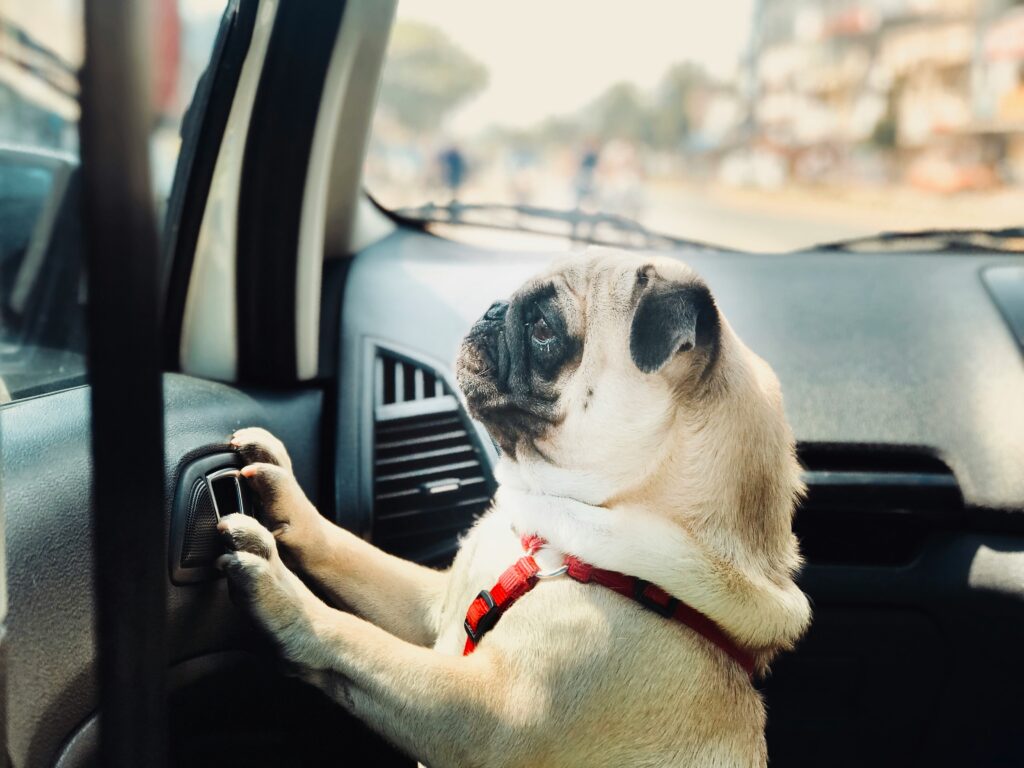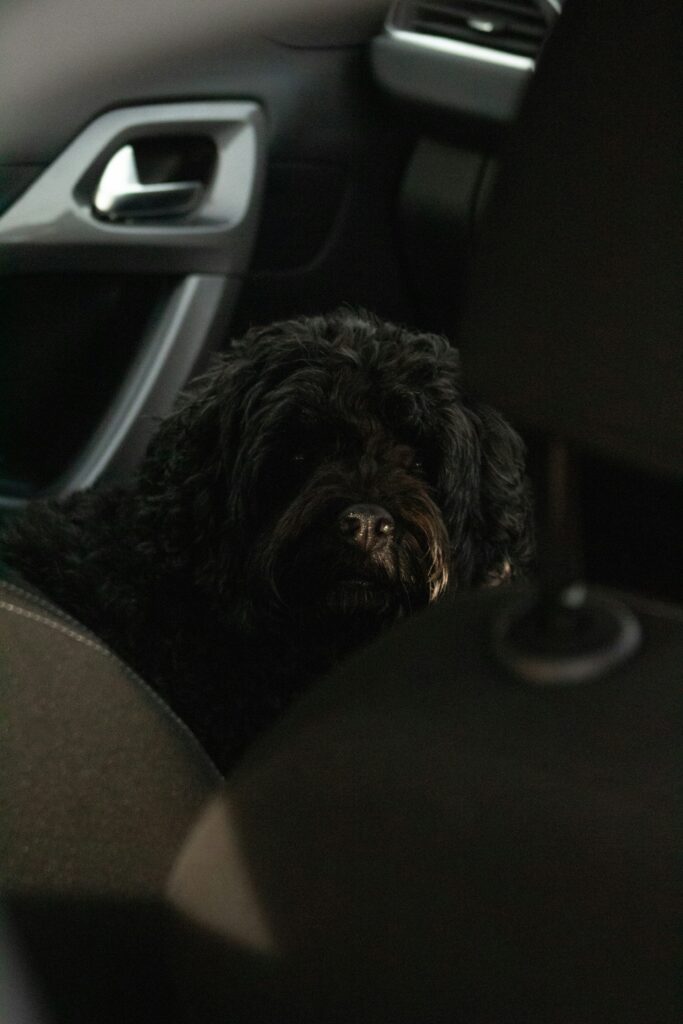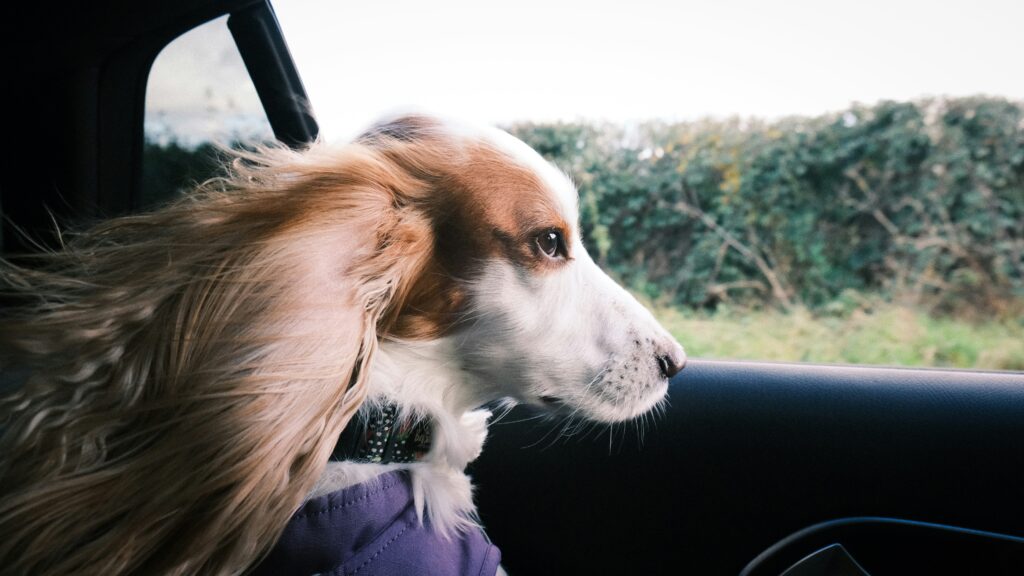- You are here:
- Home »
- Blog »
- Boston Dog Trainer »
- Helping Puppies Get Used to Car Rides Early: A Guide to Stress-Free Travel
Helping Puppies Get Used to Car Rides Early: A Guide to Stress-Free Travel
Helping Puppies Get Used to Car Rides Early: A Guide to Stress-Free Travel
Puppies are curious, adaptable, and full of energy—which makes their early weeks and months the perfect time to gently introduce new experiences. One of the most important? Car rides. Teaching your puppy to be calm and confident in the car isn’t just about convenience—it sets them up for a lifetime of safe, stress-free travel.
Whether you dream of road trips, vet visits without drama, or simply a pup who doesn’t whine the second you start the engine, it all starts with early, positive associations. In this post, we’ll walk you through a complete, puppy-friendly approach to car training that focuses on confidence, comfort, and connection.

Why It’s So Important to Start Early
Puppies go through a critical socialization window from about 3 to 14 weeks of age. During this time, they’re soaking up experiences and learning what’s safe, fun, or scary. Positive exposure to the car during this window can:
-
Prevent anxiety or fear later on
-
Make vet visits and grooming trips easier
-
Build trust and deepen your bond
-
Make travel safer and more manageable
The goal isn’t just to “get them used to it”—it’s to create a puppy who enjoys the car and feels secure in it.
What Can Go Wrong Without Early Car Training?
If a puppy isn’t properly introduced to the car, they might:
-
Get motion sickness
-
Associate the car with stress or punishment
-
Develop fear-based behaviors like barking, whining, or vomiting
-
Become difficult to load or transport
Fortunately, it’s easy to avoid all that with the right approach from the start.
How to Introduce a Puppy to Car Rides: Step-by-Step
Step 1: Start in a Parked Car
Before you even start the engine, get your puppy familiar with the inside of the car:
-
Bring them into the car while it’s turned off
-
Let them explore, sniff, and climb (supervised)
-
Use a happy voice, treats, and gentle petting
-
Bring a favorite toy or blanket to make it feel familiar
These short sessions should last just 5–10 minutes and always end on a positive note.
Pro tip: Sit with your puppy in the back seat or next to their crate—this builds comfort and trust.
Step 2: Add Short, Quiet Sessions With the Engine On
Once your puppy is happy sitting in a parked car, turn the engine on:
-
Don’t go anywhere yet—just let them hear and feel the vibrations
-
Keep the environment calm and quiet
-
Offer praise and treats for relaxed behavior
-
Keep these sessions short—3 to 5 minutes is perfect
This step helps your puppy adjust to the sounds and sensations without motion or pressure.
Step 3: Secure Your Puppy Safely
Before you start driving, choose a safe setup for your pup:
-
Crate or carrier: Best for tiny puppies or longer trips
-
Puppy car seat or booster: Great for toy breeds and close supervision
-
Seatbelt harness: For older puppies (usually over 12 weeks) who have basic obedience
Whichever setup you choose, never let your puppy roam freely in the car—it’s unsafe and distracting.
Step 4: Take Very Short Drives
Start with a quick loop around the block:
-
Keep your driving smooth—no sharp turns or hard stops
-
Talk to your puppy in a calm voice
-
Offer a treat or chew once the car stops
-
Avoid stressful destinations (no vet visits yet!)
End every ride with something fun like a play session or walk so your puppy builds positive associations.
Step 5: Gradually Increase Ride Duration
As your puppy gains confidence:
-
Add a few more minutes to each ride
-
Visit new environments: a friend’s house, a quiet park, a pet store
-
Bring a stuffed Kong or safe chew for longer trips
-
Keep your tone relaxed and encouraging
Puppies who regularly ride in the car with calm, fun experiences grow into dogs who hop in happily and settle quickly.
Common Puppy Car Ride Problems (and How to Fix Them)
1. Whining or Crying
-
Normal at first! Offer gentle reassurance but don’t reward the noise
-
Use a chew toy to distract
-
Stay calm—your energy affects theirs
2. Motion Sickness
-
Common in young puppies (under 6 months)
-
Feed 2–3 hours before travel
-
Crack a window for airflow
-
Use a vet-approved anti-nausea med if needed
3. Resistance to Getting In
-
Practice loading and unloading with treats
-
Reward calm behavior around the car
-
Never force or scold—build trust gradually
4. Overexcitement
-
Teach a cue like “settle” or “wait” before loading
-
Use a crate to limit movement
-
Give plenty of exercise before the ride
Create a Pre-Ride Puppy Routine
Establish a go-to routine so your puppy knows what to expect:
-
Potty break
-
Light exercise or play
-
Calm time (no wild play right before)
-
Car setup with crate/toys/blanket
-
Short, positive ride
-
Fun destination or reward at home
This builds confidence and reduces stress over time.
Bonus Tips for Long-Term Success
-
Socialize your pup in the car: Let them meet new people or see new places from the car to associate it with discovery and fun.
-
Use praise often: Reward calmness during and after each ride.
-
Make the car cozy: Use a familiar blanket, toy, or even a t-shirt that smells like you.
-
Take breaks: Puppies need potty and stretch breaks during longer trips (every 1–2 hours).
When to Get Extra Help
If your puppy shows extreme fear, drools excessively, or refuses the car after multiple attempts, it may be time to:
-
Consult a vet: Rule out motion sickness or other health issues
-
Work with a trainer: A certified behaviorist can help with desensitization and anxiety
The earlier you intervene, the better the outcome—puppies are incredibly resilient and responsive with the right support.
Conclusion: A Calm Puppy Makes a Confident Traveler
Early car training isn’t just about teaching your puppy to ride along—it’s about helping them build confidence in new environments, trust in you, and comfort in motion. Whether you’re planning daily errands, weekend getaways, or just peaceful vet visits, investing time in gentle, consistent car exposure will pay off for years to come.
Your puppy’s future adventures start now. And with a few treats, some patience, and a lot of love, you’re setting them up for a lifetime of tail-wagging road trips.


